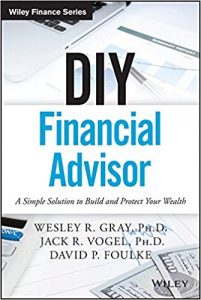About the book
This book is a combination of all the knowledge and experiences the three authors acquired in their profession as asset managers in family offices. A family office is a group of people that manage the wealth of a family throughout generations. Despite sounding like it comes from a position of prestige, a family office, or even managing finances as a family, is a must.
But this still does not take away the fact that family offices are not for everyone. Most of those who seek these services come from the ultra-wealthy, with billions to their names. Only wealthy people have the means and the reason to hire family offices.
In this book, the authors create a handbook for managing finances, which even common families can follow. They have squeezed years of service and thousands of dollars’ fee into one handbook for all people to access—and this is the result.
Review
This book delivers an unusual take on investing but shows great results. It shows various ways to a do-it-yourself managing of finances, which means that the book definitely lives up to its name.
The book shows models for asset allocation, risk control, selection, etc. They cite various research articles and squeeze them into a set of rules for the common reader to follow. They have simply made the managing of finances simpler and better.
About the Author
WESLEY R. GRAY, PH.D., founded Alpha Architect, LLC, where he is currently the executive managing member. Gray co-authored Quantitative Value: A Practitioner’s Guide to Automating Intelligent Investment and Eliminating Behavioral Errors.
JACK R. VOGEL, PH.D., is currently managing a member of Alpha Architect, LLC. He is the head of the research department, where he writes papers on empirical asset pricing, and also serves as the Chief Financial Officer.
DAVID P. FOULKE is currently managing member of Alpha Architect, LLC. He assists in business development, firm operations, strategic initiatives, and developing papers on quantitative investing and behavioral finance topics.
Table of Contents
Preface
Acknowledgments
Part One: Why You Can Beat the Experts
Chapter 1 Are Experts Trying Too Hard?
Chapter 2 Simple Models Typically Beat the Experts
Chapter 3 Experts are Biased and Overconfident
Chapter 4 Experts Tell Us Stories, Not Facts
Part Two: How You Can Beat the Experts
Chapter 5 A Framework for Investment Decisions
Chapter 6 A Simple Asset Allocation Model That Works
Chapter 7 A Simple Risk Management Model That Works
Chapter 8 Simple Security Selection Models That Work
Chapter 9 The Do-It-Yourself (DIY) Solution
Chapter 10 Some Practical Advice
Appendix: Analysis Legend
About the Companion Website
About the Authors Index
